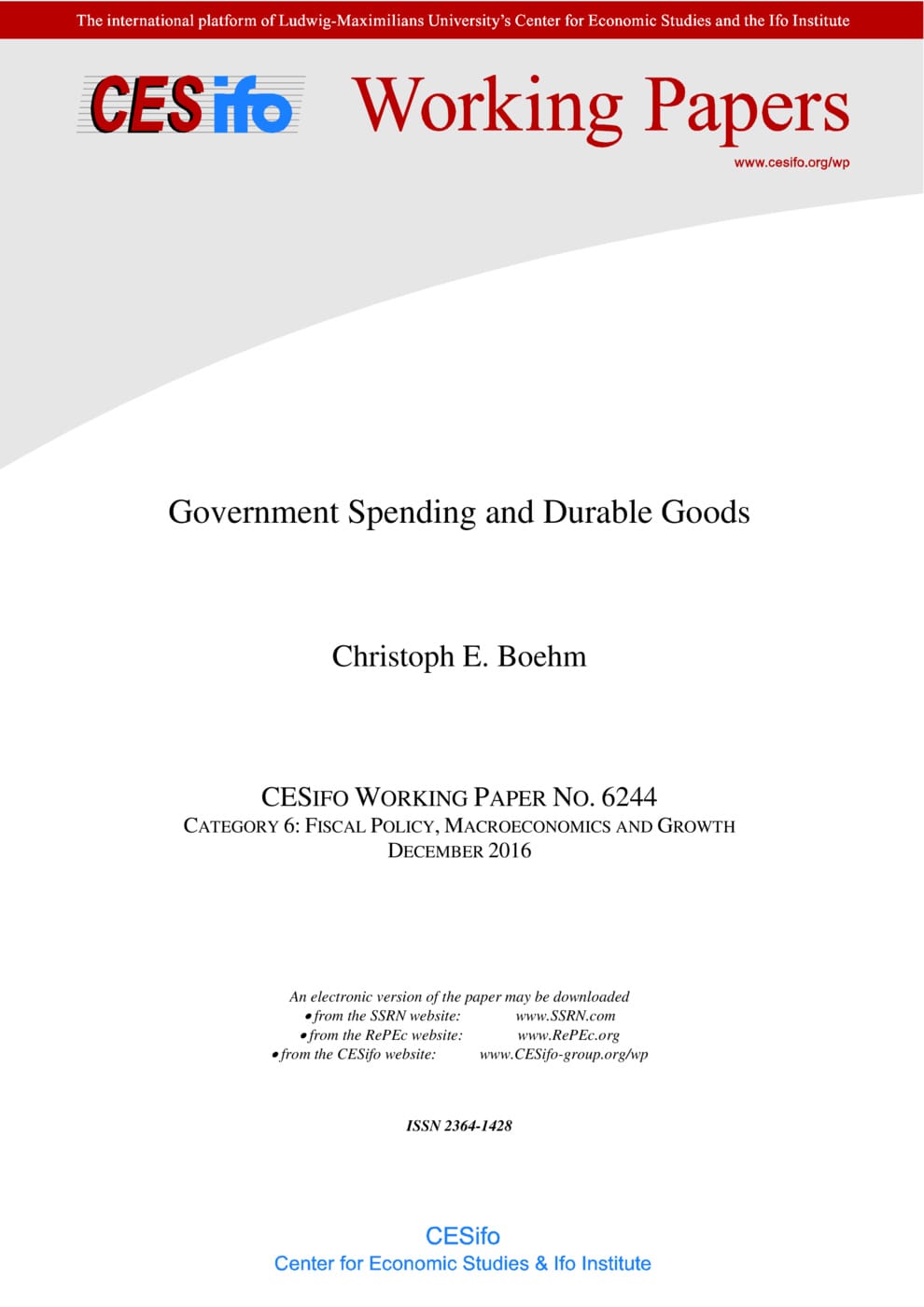Government Spending and Durable Goods
CESifo, Munich, 2016
CESifo Working Paper No. 6244

This paper shows that the fiscal multiplier for purchases of durable and investment goods is very small - much smaller than the multiplier for nondurable goods. Standard models predict small durables multipliers because private sector purchases of durable goods are highly intertemporally substitutable and therefore easily crowded out. Empirical estimates based on U.S. data confirm this result. In aggregate time series data output rises by about 50 cents less if the government purchases 1$ of durable rather than nondurable goods. At the industry level, spending on durable goods leads to smaller sectoral expansions than spending on nondurable goods. The findings of this paper suggest that infrastructure spending which is frequently part of fiscal stimulus packages is relatively ineffective at raising aggregate demand.
Fiscal Policy, Macroeconomics and Growth
Monetary Policy and International Finance